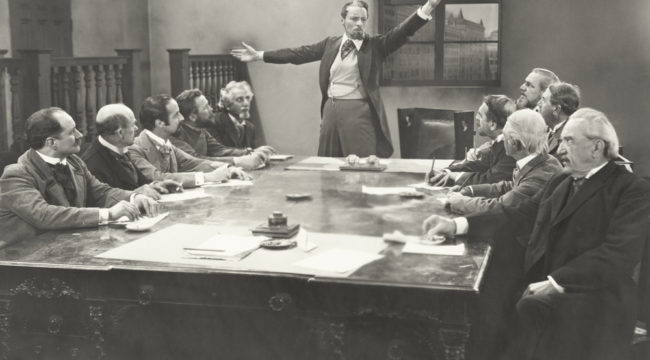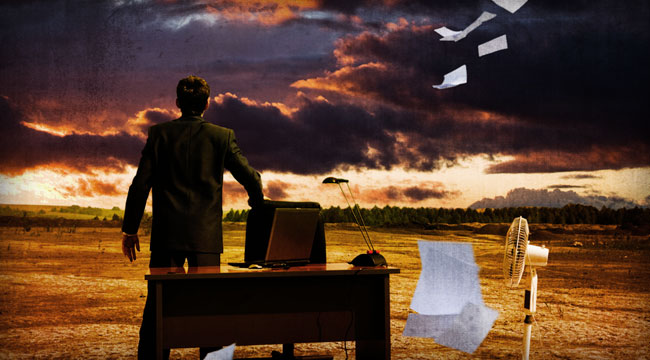
The year is 1921…
America is less than three years removed from triumph on the Western Front. It’s the dawn of the Roaring Twenties… and the Jazz Age.
Warren Gamaliel Harding is America’s czar.
And the nation is sunk in depression…
U.S. industrial production plunged 31% between 1920 and 1921. Stock prices plummeted 46%… and corporate profits a crushing 92%.
Unemployment ran as high as 19%. Storefronts everywhere gaped empty.
It was the grand migraine of the day.
Then suddenly it was over. The pain was acute… but the pain was brief.
By 1922 prosperity was finding its legs again.
Welcome to the Forgotten Depression of 1920–1921…
How America avoided depression in the early ’20s is a story seldom told.
But had it been otherwise, the Forgotten Depression may have become known to history as the Great Depression.
Why wasn’t it?
The economic doctors of the day mostly let the ailing patient be.
Despite the Progressive Era’s encroachments and WWI’s assaults laissez-faire still had roots in American soil — roots both deep and wide.
In the America of 1921 the stock market looked after itself… and buried its own dead.
Business was on its own hook. And banishing the business cycle was not the work of government.
Just eight years old, the Federal Reserve was still in knee pants.
Its role at the time was simple and it knew it — to provide liquidity to the banking system in the event of another banking crisis. Little more.
Inconceivable today, the Fed sat back as the economic machinery seized heading into 1921.
In the words of one economic historian, “Despite the severity of the contraction, the Fed did not move to use its powers to turn the money supply around and fight the contraction.”
Believe it or not (you might not), they actually increased rates.
The Fed raised rates from 4% in 1919 to 7% in 1920. And to 6% in 1921… right in the teeth of the depression.
Angels of mercy! Raising interest rates in a depression. Didn’t they know?
Not until 1922, after the recovery was well along, did they reduce rates to 4% again.
Remarkable.
And once depression broke upon the scene, Harding broke every one of today’s commandments.
Did he try to spend the country into recovery? Did he raise taxes on the rich?

No and no.
Harding nearly sawed the federal budget in half between 1920 and 1922. He shriveled the national debt by a third. He slashed taxes A through Z.
If Paul Krugman were around he would have screamed blue murder and set Mr. Harding down as an enemy of the people.
But Harding followed a different set of lights than the good Dr. Krugman…
Imagine — if possible — a contemporary president pounding this drum:
We will attempt intelligent and courageous deflation, and strike at government borrowing which enlarges the evil, and we will attack high cost of government with every energy and facility which attend Republican capacity…
Let us call to all the people for thrift and economy, for denial and sacrifice if need be, for a nationwide drive against extravagance and luxury, to a recommittal to simplicity of living, to that prudent and normal plan of life which is the health of the republic.
Harding prescribed a medicine too bitter for modern America.
But it was the proper medicine in the proper dose.
Recovery was underway by the summer of 1921. Unemployment was down to 6.7% by the following year… and a vanishing 2.4% the year after.
Industry was on the jump again.
As one economic historian noted, “The economy rebounded quickly from the 1920–1921 depression and entered a period of quite vigorous growth.”
So… the budget was cut… the money supply fell… and interest rates rose.
Worse medicine is scarcely imaginable to today’s economic healers.
The great Jim Grant, who wrote a book on the Forgotten Depression of 1920–1921:
By the lights of Keynesian and monetarist doctrine alike, no more primitive or counterproductive policies could be imagined.
Yet these policies proved so primitive and counterproductive the country was out of depression within 18 months.
The facts are the facts.
But for his efforts — or lack of same — Harding has been read out of history altogether.
It was the saint FDR who a decade later “saved capitalism from itself” with his New Deal and massive assault on enterprise.
Ironic, that. But history smiles upon men of action… even if it’s the wrong action.
Inaction makes for dull history. And idle historians.
But if Harding had been the man of action FDR was, the 1920s might have been known as the Great Depression — not the 1930s.
And the term “Roaring Twenties” would probably be as unknown today as Harding himself…
Below, Charles Hugh Smith shows you what all the “action” governments and their central banks have taken over the past eight years has led to. Read on.
If the 2007 recession is the Great Recession What is 1982? The greatest Recession of 1982..(brought to you by Jimmy Carter). 1982 had double digit inflation, interest rates and unemployment.
ReplyDelete